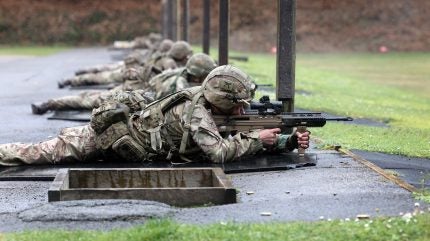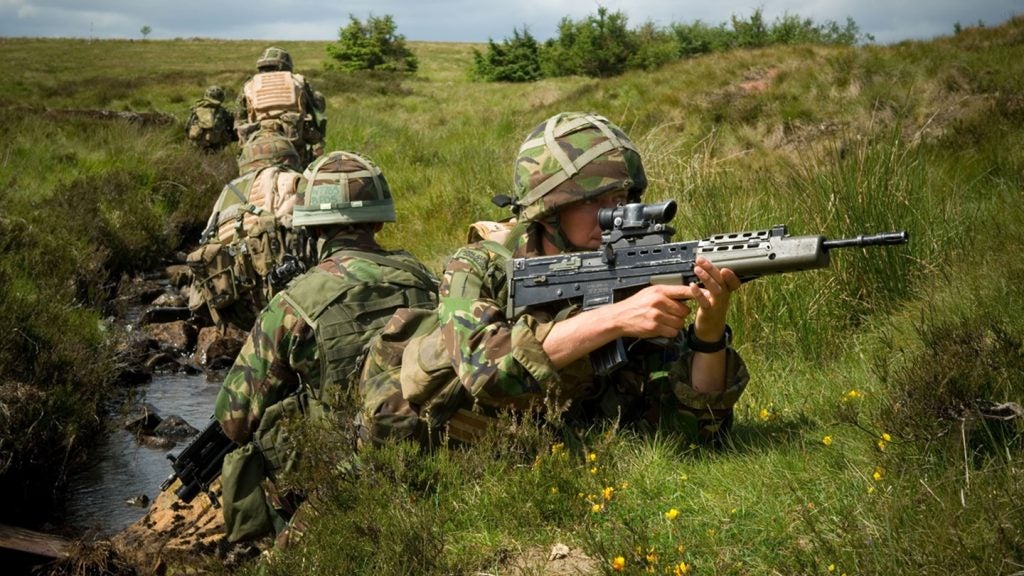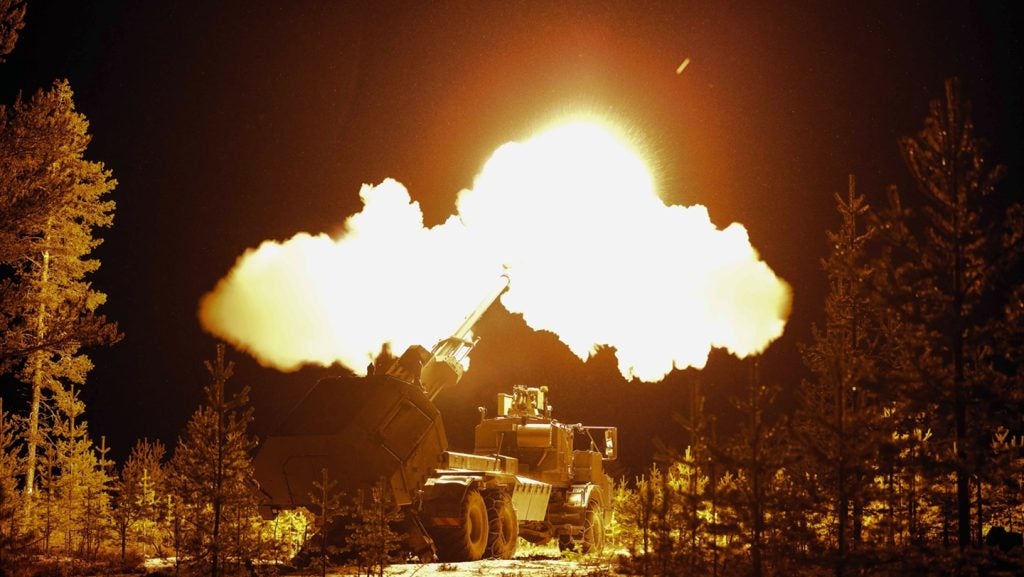
The plan to replace the British military’s SA80-series infantry rifle could be pushed to the right following confirmation from the UK government that Project Grayburn remains in the concept phase, with progress to assessment likely only in 2026.
While the latest variant SA80A3 is not due to leave service until 2030, far more of the older SA80A2 models remain in service, according to 2022 figures, at 17,900 and 134,912 respectively.
As far back as 2018, the UK government initiated the mid-life upgrade programme of the SA80 from the A2 to the A3 version with initial £5.4m ($7.1m) contract award to Heckler and Koch for 5,000 units, which would see the rifle remain in service “until 2025 and beyond”.
The upgrades included making the A3 model 100g lighter than the A2, as well as the installation of a bracket to secure low light sights and improvements to the gun barrel.
The original SA80A1 model, introduced in 1985, has been widely criticised, including by serving military personnel.
Despite the UK’s intransigence in finding an SA80 replacement, according to an earlier report by GlobalData, the Nato Small Arms & Light Weapons Market was anticipated to grow to $1.2bn by 2030, indicative of considerable movement in the Alliance’s infantry weapon procurement.
The SA80 rifle: 40 years of service
With the SA80 and its variants reaching 40 years of service, the rifle has long-since outliving its predecessor, the L1A1 Self-Loading Rifle (SLR), the British version of the FN FAL, which was used by the UK for a little over 30 years.
Prior to the SLR, the UK’s standard battle rifle was the No 4 Lee Enfield, the latest variant of a weapon operated since the late 19th Century.
Providing an update on Project Grayburn, UK Defence Procurement Minister Maria Eagle on 12 May said the programme remained in the concept phase, during which the “scope and complexity will be assessed and a timeline for delivery will be developed”, before being taken forward to assessment.
“Subject to the outcome of the Strategic Defence Review, Project Grayburn is due to enter the assessment phase in 2026,” Eagle said.

Speaking earlier in January 2025, Eagle did provide a vague timeline for the replacement of the L85/SA80 rifle, which would take place “over the coming decade” through Project Grayburn.
Project Grayburn was thought likely to go on contract in the Q4 2026 – Q1 2027 timeframe, for around 150,000 weapons, deliverable in batches, although a 2026 start date for the assessment phase indicates this could be wide of the mark.
The SA80 replacement is part of a wider replacement of old weaponry used by the British military, including systems such as the legacy L115 and L118 sniper rifles, the L110 A2 Light Machine Gun, and the acquisition of a new Royal Marine Commando battle rifle.
However, it appears that while special operations forces, including the Rangers and Commandos, are provided new equipment, regular forces will have to make do with the SA80A2 and A3 rifles for a good while longer.
UK procurement: dial-up in a broadband world
As ever with UK military procurement, the pace of programme delivery, that is, introducing new platforms and systems into service, remain woefully out of step with real world conditions.
Take for example, the fact that the UK only a 14-strong fleet of Archer 155mm self-propelled howitzer (SPH) systems in service, having ceased to operate the in-service AS90 in recent months, a story broken by Army Technology. The RCH 155 replacement is not due until 2029 at the earliest.
A new King’s Gurkha Artillery unit created will have to share the Archer force with more than a dozen artillery regiments in the British Army. This equates to approximately one Archer 155mm SPH per British Army artillery regiment.

The British Army is also still operating hundreds of the 1990s era Warrior infantry fighting vehicles and Challenger 2 main battle tanks, and hundreds of the older Bulldog armoured personnel personnel carriers.
Replacement programmes such as the Challenger 3, Ajax IFV, and Boxer MIV are still years away from providing enough numbers to equip the supposed UK contribution to Nato of a full warfighting division.
Analogous of this, UK defence procurement is running at 56k modem speeds in a world operating on fibre. This inability to advance through the military capability generations at the pace of relevance leaves the British Army, in this case, an outmoded force, incapable of operating in a modern, contested battlespace.


